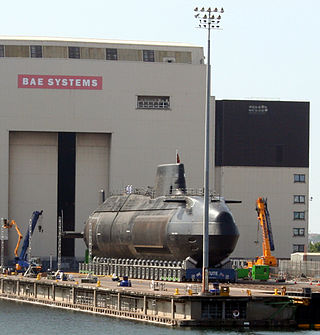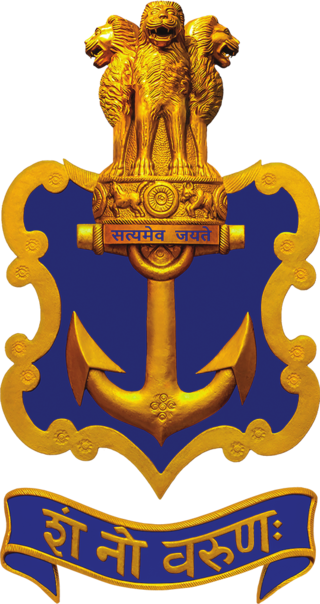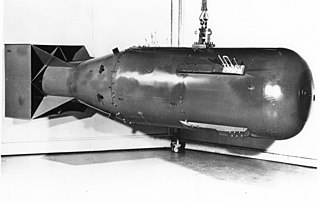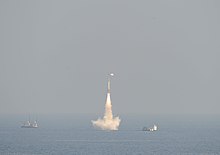A ballistic missile submarine is a submarine capable of deploying submarine-launched ballistic missiles (SLBMs) with nuclear warheads. These submarines became a major weapon system in the Cold War because of their nuclear deterrence capability. They can fire missiles thousands of kilometers from their targets, and acoustic quieting makes them difficult to detect, thus making them a survivable deterrent in the event of a first strike and a key element of the mutual assured destruction policy of nuclear deterrence. The deployment of ballistic missile submarines is dominated by the United States and Russia. In fact, 70 % of nuclear warheads in the USA are carried by SSBN submarines.

A nuclear submarine is a submarine powered by a nuclear reactor, but not necessarily nuclear-armed. Nuclear submarines have considerable performance advantages over "conventional" submarines. Nuclear propulsion, being completely independent of air, frees the submarine from the need to surface frequently, as is necessary for conventional submarines. The large amount of power generated by a nuclear reactor allows nuclear submarines to operate at high speed for long periods, and the long interval between refuelings grants a virtually unlimited range, making the only limits on voyage times being factors such as the need to restock food or other consumables.

The Indian Navy is the maritime branch of the Indian Armed Forces. The President of India is the Supreme Commander of the Indian Navy. The Chief of Naval Staff, a four-star admiral, commands the navy. As a blue-water navy, it operates significantly in the Persian Gulf Region, the Horn of Africa, the Strait of Malacca, and routinely conducts anti-piracy operations and partners with other navies in the region. It also conducts routine two to three month-long deployments in the South and East China seas as well as in the western Mediterranean sea simultaneously.

India possesses nuclear weapons and previously developed chemical weapons. Although India has not released any official statements about the size of its nuclear arsenal, recent estimates suggest that India has 172 nuclear weapons and has produced enough weapons-grade plutonium for up to 200 nuclear weapons. In 1999, India was estimated to have 800 kilograms (1,800 lb) of separated reactor-grade plutonium, with a total amount of 8,300 kilograms (18,300 lb) of civilian plutonium, enough for approximately 1,000 nuclear weapons. India has conducted nuclear weapons tests in a pair of series namely Pokhran I and Pokhran II.

The Strategic Forces Command (SFC), sometimes called Strategic Nuclear Command, forms part of India's Nuclear Command Authority (NCA). It is responsible for the management and administration of the country's tactical and strategic nuclear weapons stockpile. It was created on 4 January 2003 by the Vajpayee Government. Air Marshal Teja Mohan Asthana became its first commander-in-chief.

The Borei class, alternate transliteration Borey, Russian designation Project 955 Borei and Project 955A Borei-A, are a series of nuclear-powered ballistic missile submarines being constructed by Sevmash for the Russian Navy. The class has been replacing the steadily retiring Russian Navy Delta III and Delta IV classes and fully retired Typhoon, all three classes being Soviet-era submarines.

A nuclear triad is a three-pronged military force structure of land-based intercontinental ballistic missiles (ICBMs), submarine-launched ballistic missiles (SLBMs), and strategic bombers with nuclear bombs and missiles. Countries build nuclear triads to eliminate an enemy's ability to destroy a nation's nuclear forces in a first-strike attack, which preserves their own ability to launch a second strike and therefore increases their nuclear deterrence.

Sagarika, also known by the code names K-15 or B-05 or PJ-08, is an Indian submarine-launched ballistic missile (SLBM) with a range of 750 kilometres (466 mi) that was designed for retaliatory nuclear strikes. It belongs to the K Missile family and forms a part of India's nuclear triad.
The Arihant-class is a class of Indian nuclear ballistic missile submarines under construction for the Indian Navy. They were developed under the ₹900 billion (US$11 billion) Advanced Technology Vessel (ATV) project to design and build nuclear-powered submarines. These vessels are classified as 'strategic strike nuclear submarines' by India.

K-535 Yuriy Dolgorukiy is a Borei-class nuclear-powered ballistic missile submarine of the Russian Navy, and the lead vessel of the class. Named after the founder of Moscow, Yuri Dolgorukiy, the vessel was laid down on 2 November 1996 and was first planned to enter service in 2001. However, project for the R-39M SLBM that the Borei class was supposed to carry was abandoned after several failed tests, and the submarine was redesigned for the new RSM-56 Bulava SLBM. The RSM-56 Bulava is smaller than the original R-39M, and in the 2007 START treaty data exchange it was reported that all Borei-class submarines would be equipped with 16 missiles instead of 12, as originally intended.
K-4 or Kalam-4 is a nuclear capable intermediate-range submarine-launched ballistic missile developed by the Defence Research and Development Organisation of India to arm its Arihant-class submarines. The missile has a maximum range of about 4000 km which offers greater operational flexibility compared to its predecessor K-15 having a limited shore-bounding range. On deployment, the missile will be the first to operationalise India's sea-based nuclear triad and can accommodate the demand of credible second-strike capability of its nuclear doctrine.

The K family of missiles, is a family of submarine-launched ballistic missiles (SLBM) developed by India to boost its second strike abilities and thus augment its nuclear deterrence. Information about this family of missiles has mostly been kept classified. It is reported that 'K missiles' are faster, lighter and stealthier than their Agni missile counterparts. High Energy Materials Research Laboratory (HEMRL) developed a new formulation of composite propellant that is more efficient and provide greater thrust compare to Agni missile series. The objective behind the development is to make K missile family faster and lighter without compromising on operational range.

INS Arighaat is an upgraded variant of the Arihant-class submarine. It is the second nuclear-powered ballistic missile submarine made by India under the Advanced Technology Vessel (ATV) project to build nuclear submarines at the Ship Building Centre in Visakhapatnam. It has the code name S3.
USHUS is an Integrated Submarine Sonar System developed by the Naval Physical and Oceanographic Laboratory (NPOL) of the Defence Research and Development Organisation (DRDO) of India and manufactured by Bharat Electronics Limited (BEL). It has been developed for use in submarines of the Indian Navy, especially for Sindhughosh-class submarines. Some reports also suggest that Arihant-class nuclear ballistic missile submarines are also equipped with USHUS system. USHUS replaces Russian systems like MGK-400 and MGK-519 sonars on Indian submarines.

The Indian Navy has been focusing on developing indigenous platforms, systems, sensors and weapons as part of the nation's modernisation and expansion of its maritime forces. As of November 2023, the Indian Navy had 67 vessels of various types under construction including destroyers, frigates, corvettes, conventional-powered and nuclear-powered submarines and various other ships. It plans to build up to a total of 200 vessels and 500 aircraft by 2050. According to the Chief of the Naval Staff's statement in December 2020, India has transformed from a buyer's navy to a builder's navy.

The Visakhapatnam-class destroyers, also classified as the P-15 Bravo class, or simply P-15B, is a class of guided-missile destroyers currently being built for the Indian Navy. The Visakhapatnam class is an upgraded derivative of its predecessor, the Kolkata class, with improved features of stealth, automation and ordnance.
Project 77 is a of the Indian Navy acquisition programme to procure nuclear-powered attack submarines. The Government of India, through the Cabinet Committee on Security (CCS), approved the construction of six of these submarines in February 2015. These will be designed by the Navy's in-house Directorate of Naval Design and built in India at the Ship Building Centre at Visakhapatnam. The construction was expected to commence on 2023-24 while the first submarine is expected to enter service in 2032. However, further and final clearance for initially acquiring 2 nuclear submarines, under the Project 77, was approved by CCS on 10 October 2024.

S5 is the code name for a planned class of Indian nuclear-powered ballistic missile submarines currently being developed for the Indian Navy. S5 will weigh around twice as much as the preceding Arihant-class submarine. It is expected to start production by 2027.
K-5 is a submarine-launched ballistic missile under development by Defence Research and Development Organisation of India. The missile has a planned range of 6,000 kilometres.
K-6 is an intercontinental submarine-launched ballistic missile under development by the Defence Research and Development Organisation of India. The missile has a planned range of around 10,000 to 12,000 kilometres.
















